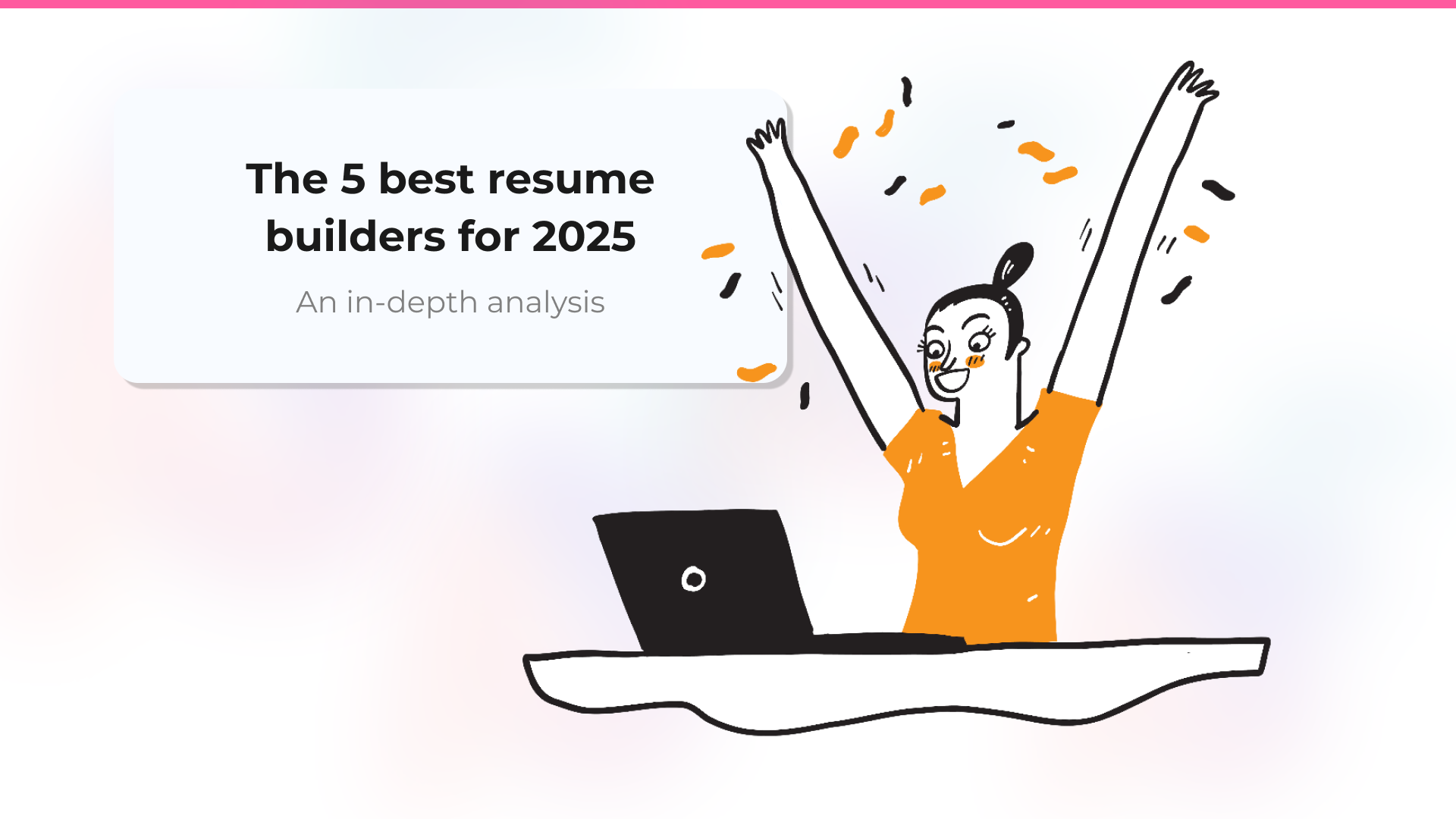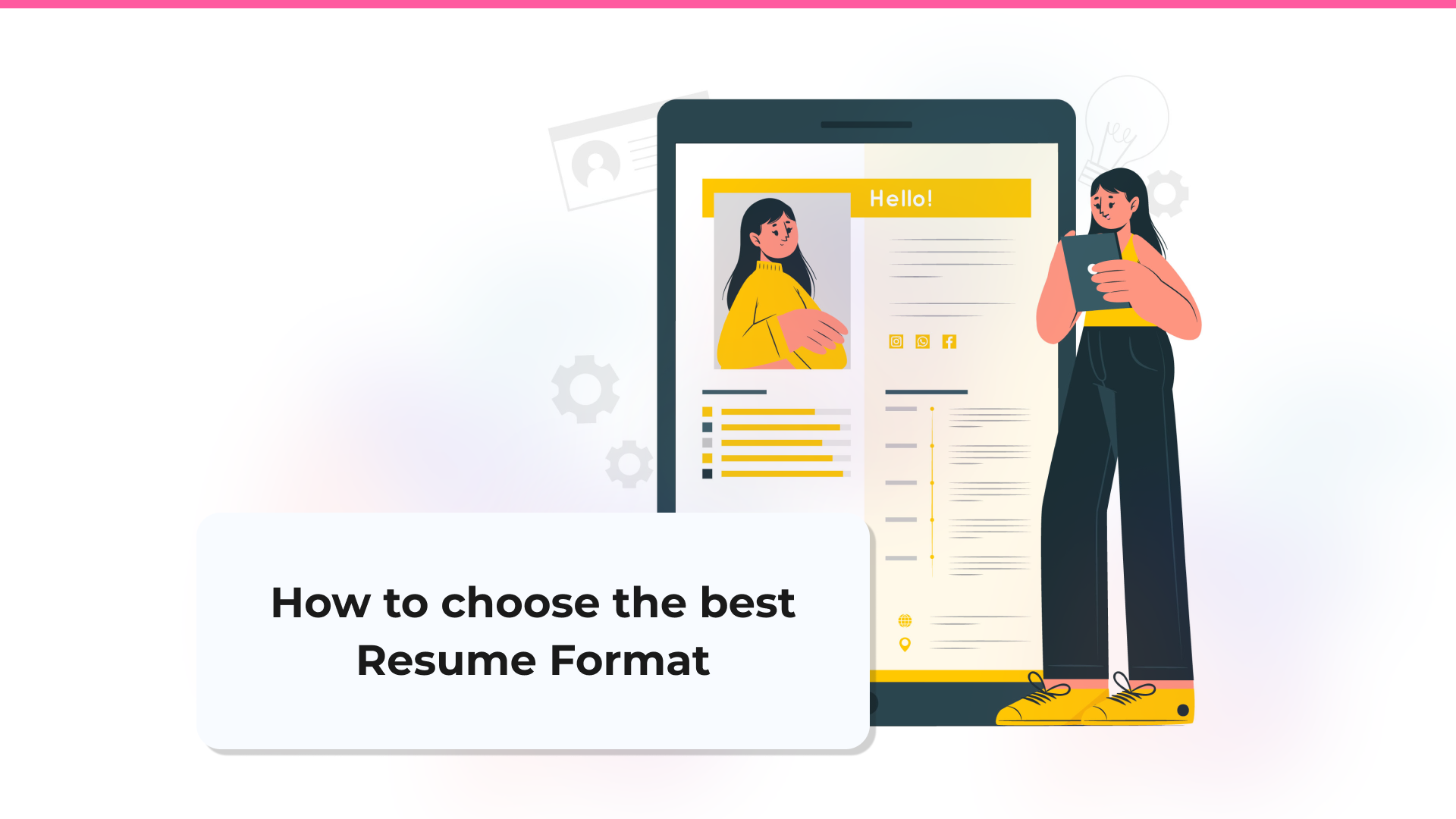
How to choose the best Resume Format for you in 2025: a complete guide
Many job seekers believe a highly designed resume will help them stand out. They spend hours browsing Canva, fine-tuning colorful templates with icons, skill bars, and infographics. Ironically, this visual noise often buries your most impressive achievements during that crucial first scan.
At its core, a resume format is a carefully curated blend of:
- Structure: how your experience is logically arranged (e.g., chronological, functional, or hybrid).
- Layout: the visual organization of content, including white space, columns, margins and section breaks.
- Design elements: aesthetic decisions like font selection, colors, graphic accents and consistent styling.
- File type: the digital format your resume is saved and submitted in (PDF, Word, or web link).
A well-chosen resume format is critical because it determines whether recruiters can swiftly grasp your value in the mere 6-10 seconds they typically spend on an initial review (as shown in a 2023 Jobvite study). A poorly formatted resume (cluttered, incompatible with Applicant Tracking Systems (ATS), or simply misaligned with industry expectations) can send your application straight to the “no” pile.
This guide will equip you with a context-driven framework for choosing the best resume format for your goals. You’ll learn:
- How to format your resume for clarity: why clean, scannable layouts consistently outperform design-heavy mistakes.
- The best resume structure for your career stage: when to use chronological, functional, or hybrid formats.
- How to make your resume ATS-friendly: proven ways to balance machine-readability with human appeal.
- When to use the Harvard resume template: who it’s for, and when to avoid it.
- The best file types for online applications: when to use PDF, Word, or direct links, depending on your industry and submission channel.
Crafting resume formats for maximum clarity and scannability
Many job seekers believe a visually striking resume format will make them stand out, pouring hours choosing a Canva template with colorful designs, skill bars or infographics. But all this noise can inadvertently bury your most impressive achievements in a recruiter's initial scan.
Recruiters don't read resumes in the traditional sense; they scan them. That initial 6–10 second review is a lightning-fast search for critical info: who you are, what you’ve done, and where you’ve worked. Overdesigned resumes create friction, forcing recruiters to interpret rather than absorb, a friction point that often leads to quick disqualification.
This common pitfall stems from the pressure to differentiate oneself in competitive job markets. But the most effective resume formats are, paradoxically, invisible. The layout and structure do their job quietly, guiding the eye effortlessly without demanding attention. Even in visually driven fields like graphic design, clarity on your resume still trumps overt aesthetics; your portfolio is the true canvas for showcasing your creative flair, not your resume.
Tips to avoid common resume design mistakes
- Prioritize readability: opt for clean, professional sans-serif fonts or classic serifs that are easy on the eyes. Avoid overly decorative or niche fonts that might not render correctly on all systems or in ATS.
Check the 7 best fonts for resumes in 2025.
- Use bolding for emphasis: highlight section titles, company names, job titles and quantifiable wins. This helps recruiters instantly spot what matters most.
- Break it into bullet points: dense paragraphs kill skimmability. Use concise, action-oriented bullets to highlight your achievements clearly.
- Consistent formatting: maintain uniform spacing, font styles and alignment across all sections. Inconsistency creates visual clutter.
- Skip the gimmicks: skip skill bars or excessive colors unless applying to creative roles where visual flair is expected and your handing over the resume directly to a person (bypassing the ATS).
Choose templates that pass the 6-second resume scan, they’re built to help your strengths stand out without visual overload.
What is an ATS-Friendly resume format?
Applicant Tracking Systems often inspire fear, and understandably so. The internet is full of advice warning that if your resume isn’t plain and stripped of design, it’ll be rejected. But that’s an oversimplified (and outdated) view.
First, not all employers use ATS. Small companies, startups and referrals often rely on manual screening. Second, ATS capabilities vary wildly. Modern tools like Greenhouse, Lever and Workday can parse cleanly formatted PDFs with minimal styling. Older systems may still struggle, but you don’t need to default to text-only resumes to succeed.
Most importantly, humans still make the final hiring decision. So while ATS compatibility matters, making your resume engaging and easy for real people to read is equally vital.
Understand what an ATS is and how it really works so you can optimize without compromising your impact.
Over-optimizing for ATS to the point of removing design, trimming personality and flattening your story will backfire. Your aim should be a versatile format that strikes a delicate balance: robust enough for machine readability, yet compelling enough to make a powerful human impact.
ATS Resume Tips
- Use standard headings: stick with universally recognized section titles like Work Experience, Education, Skills, Summary and Projects. Skip creative labels like “My Journey” or “Level-Up Timeline”, as they may confuse parsing systems.
- Embed keywords naturally: instead of keyword-stuffing, integrate relevant terms seamlessly into your bullet points, skills section and summary.
- Think in synonyms: match the language in job descriptions, but include variations too. If the role requires “customer relationship management,” add “client engagement” or “CRM software” to increase match likelihood.
- PDF is still your best bet: for most roles, a clean, well-structured PDF is ATS-friendly and human-friendly. We’ll dive deeper into file formats later on.
A balanced resume format is about making smart, strategic design choices that ensure your qualifications are understood by both algorithms and hiring managers.
Best resume structures for your career stage
The structure of your resume (chronological, functional or hybrid) needs to match your career story. The wrong structure can confuse recruiters, blur your progression or unintentionally highlight gaps. But the right one sends a strategic signal about what you bring to the table: stability, intentional growth or adaptability.
Reverse-chronological resume: the standard for a reason
The reverse-chronological format is the most widely used, and with good reason. It presents your work history starting from your most recent position and works backward, clearly showing where you worked, what you did, and when.
- Best for: professionals with a clear, linear career path, especially those applying for roles similar to their current or previous one.
- Why it works: recruiters and ATS love it. It’s predictable, scannable and shows career momentum.
- Watch out for: visible employment gaps. These can stand out, but if addressed with clarity and confidence, they rarely disqualify you.
Functional resume: use sparingly (and carefully)
A functional resume organizes your background by skills or areas of expertise, rather than job history. It typically starts with a section like “Core Competencies” or “Summary of Qualifications,” and focuses on what you can do sometimes without saying where or when you did it. Work history comes later, often with minimal detail.
- Why people use it: to spotlight transferable skills, minimize irrelevant past roles, or downplay career gaps.
- The risk: recruiters are often skeptical. When timelines are vague, they may assume you’re hiding something. Questions like “How long were they in that role?” or “Was this paid work?” can create friction.
- It’s mainly suited for: major career changers or those with long gaps, but even then, it’s risky.
- Crucial caveat: if you must use a functional format (because they ask you to), always include dates for your past employment history for transparency, even if the detailed bullet points are under skill categories. Transparency builds trust.
Hybrid resume
The hybrid format blends elements of functional and chronological resumes. It typically starts with a summary or skills section highlighting your top strengths and accomplishments, followed by a traditional work experience section in reverse-chronological order.
- Great for: mid-career professionals in transition, those with broad skill sets or anyone needing to highlight strengths that aren’t obvious from job titles alone.
- Why it works: it gives you control over what the reader sees first, while still offering the structure recruiters expect.
- Pitfall to avoid: redundancy. If your skills section just repeats your work experience, you’re wasting space. Ensure it complements, rather than duplicates, the work experience section.
Use the top section to highlight high-impact results, certifications or transferable skills. Think of it as a teaser that earns attention before they dive into your full story.
Example:
A software engineer shifting into product management might start with highlights like “Led cross-functional teams,” “Owned product roadmap,” or “Improved UX through data-driven iterations” before outlining their chronological engineering roles.
How to choose the right resume structure
- Default to chronological unless you have a strategic reason not to. It is the most intuitive, widely preferred by recruiters and ATS-friendly for the vast majority of job seekers.
- Use functional only as a last resort and only if your past experience is truly irrelevant to your target role or you have significant career gaps that can’t be framed another way.
- If you use a hybrid, keep the top section tight and intentional. Highlight what makes you a strong fit now, not just what you did in the past.
- Explain gaps clearly and concisely: whether due to education, travel, family or personal growth; a short and honest explanation shows maturity and transparency.
Best file types for your resume
The format you choose to download your resume (PDF, Word, or even an online link) is a strategic decision that affects how your application is received, processed, and perceived. Your beautifully designed 5MB PDF, laden with high-resolution images, may crash a recruiter's outdated system and cost you a valuable opportunity. Choosing the best format is always about context.
PDF: the standard for resume delivery
The Portable Document Format (PDF) is, in most cases, the gold standard for submitting resumes.
Why PDF works so well
- Preserves layout and design: a PDF locks your resume's formatting, fonts and visual elements exactly as you intended, regardless of the recipient's operating system, software, or device. This consistency ensures recruiters see your resume precisely as you designed it.
- Security and immutability: PDFs are harder to edit accidentally or intentionally, reducing the risk of unauthorized changes.
- Universal readability: PDFs are universally readable, requiring no special software beyond a free PDF reader (which is pre-installed on most modern computers).
- ATS compatibility: most modern ATS are highly capable of parsing well-exported PDFs.
Ensure your PDF performs well
- Use “Save As” or “Export to PDF”: avoid “Print to PDF,” which can flatten the file into a non-searchable image, rendering it invisible to ATS.
- Embed fonts: this prevents font substitution issues when the recipient doesn’t have the same fonts installed.
- Keep file size lean: aim for under 1MB. Large files (especially from tools like Canva or Photoshop) may be flagged, slow to open, or even crash older systems.
- Avoid poorly exported PDFs: if your resume is one big image, ATS tools can’t read it. Stick with text-based designs from word processors or, even better, ATS-friendly resume builders such as CandyCV.
Word: editable but risky
Microsoft Word (.docx) is occasionally requested by recruiters or agencies who might need to tweak the format, remove personal info or add internal comments before sharing with a client. If that’s not the situation, you’re better off with a PDF.
Risks of using Word files
- Formatting breaks easily: layouts may look wildly different depending on Word version, operating system or even the viewer’s zoom settings. What looks sleek on your screen might look chaotic to the recruiter.
- Accidental edits: your document is editable, meaning it could be inadvertently altered.
- Security issues: some companies block Word attachments entirely due to risks associated with macro viruses.
Online Links: a powerful complement, not a replacement
Links to your online presence (LinkedIn, personal portfolio, GitHub…) can strengthen your application, but they should never replace an actual resume file.
What links do well
- Showcase extended work: for software engineers (GitHub, Stack Overflow), creatives (Behance, Dribbble), or writers (blogs, Medium), links provide context beyond what a static resume can show.
- Live updates: unlike a PDF, your online resume or LinkedIn profile can evolve in real time, offering the latest version of your professional narrative.
- Open doors for networking: recruiters sourcing candidates often use LinkedIn and similar platforms to reach out directly.
Limitations and Best Practices
- Beware firewalls: some systems or companies block external links. Always include a downloadable resume.
- Be selective: only include links that are polished, current and relevant.
- Newer formats: in some creative industries, video resumes or brief intro videos are gaining traction. While promising, they’re still niche and should only complement a standard resume, not replace it.
Choose the right file format to ensure your resume’s design and content come through clearly, both to human reviewers and ATS bots.
The Harvard resume template: an example of great formatting
The Harvard Resume Format, created by Harvard’s Office of Career Services, is a clean, one-page template designed for clarity, impact, and fast readability. It’s especially popular among students and professionals targeting structured, traditional industries like consulting, investment banking, or academia. But is it the right fit for you? Let’s break down its features, strengths and ideal use cases.
What is the Harvard resume format?
At its core, the Harvard format favors a minimalist, text-forward layout designed for rapid scanning and easy information retrieval. Key elements include:
- Header: name, contact info and optionally a LinkedIn link.
- Education: for students and recent grads, this section usually comes first. It includes degrees, institutions, graduation dates, relevant coursework, strong GPAs (if applicable), and academic honors. Experienced professionals using this format often place Education after Experience.
- Experience: listed in reverse-chronological order, with each job described using action-oriented bullet points that focus on measurable achievements and impact, not just responsibilities.
- Skills and Interests: technical skills, languages or hobbies relevant to the role.
- Layout: a single-column, text-heavy design with professional fonts and standard margins. It purposely avoids visuals like graphics, photos or fancy formatting.
- Page limit: traditionally, it strongly encourages a one-page limit, especially for early-career professionals.
Strengths of the Harvard resume format
- Clarity and concision: the one-page design forces you to prioritize what matters most, helping recruiters quickly assess your fit in just seconds.
- Exceptional ATS compatibility: thanks to its simple, text-based structure, the Harvard format performs exceptionally well with Applicant Tracking Systems, reducing the risk of parsing errors or missed keywords.
- Strong emphasis on quantifiable results: by prioritizing action-oriented, measurable achievements, the Harvard format inherently speaks the language of recruiters who seek concrete evidence of impact (i.e. "increased X by Y using Z").
Limitations of the Harvard resume format
- Visually generic: in highly competitive fields where many candidates use similar templates, it can contribute to a "sea of sameness," making it harder to stand out visually.
- Unsuitable for visually-driven/creative roles: in fields like graphic design, marketing, UX/UI, or advertising, where your resume is expected to demonstrate aesthetic sensibility, the Harvard format can be a significant drawback.
- Cultural limitations: as we'll discuss, some international markets expect elements like photos or more personal information that the Harvard format deliberately omits.
When to use the Harvard template
- Students and early-career professionals: its structure helps you organize your experiences around internships, projects, and academic strengths, even when your work history is limited.
- Conservative industries: perfect for roles in finance, law, government, consulting, or academia, where clarity and professionalism outweigh design creativity.
- High-volume job applications: when applying to multiple roles via job boards or ATS systems, this format ensures flawless parsing and maximum efficiency.
Tailoring your resume format for global impact: industry, geography and career stage
A one-size-fits-all resume simply doesn’t exist. A candidate who tailored their resume for Silicon Valley with a clean, minimalist look, added a headshot when applying to Berlin because local expectations vary. This example illustrates a critical truth: cultural fluency in job applications is as essential as technical fluency.
Geographic norms
Resume standards change across borders, shaped by legal norms and professional culture.
- United States and United Kingdom: personal info like photos, marital status, age, gender, or religion is never included. Including them can actually lead to immediate rejection, as companies seek to avoid perceived biases.
- Continental Europe: a professional headshot is often standard in countries like Germany, France, Spain or Austria. You may also be expected to include personal details such as date of birth or nationality.
- Latin America: a professional photo might be accepted depending on the country. More creative formatting is also acceptable in certain sectors.
- Asia (Japan, South Korea): resumes often need highly structured formats, emphasizing personal details, photos and sometimes even family information. The concept of a "Resume" in these regions can differ significantly from Western norms.
- Australia & Canada: similar to the U.S./UK, personal details and photos are typically omitted.
Research local norms via LinkedIn, Glassdoor, local job boards or by networking with professionals in your target geography.
Industry-specific resume formats
Different industries have distinct expectations regarding resume aesthetics and content emphasis.
Tech (Software Engineering, Data, IT…)
- Minimalist layouts with clean fonts and simple design.
- Focus on technical skills, programming languages, and project links (GitHub, Stack Overflow).
- Emphasize impact: e.g., “Refactored backend system to reduce latency by 30%”.
Creative Roles (Design, Marketing, UX, Advertising…)
- Your resume reflects your personal brand. It can include subtle design elements, color, and layout creativity, but readability is still key.
- Include a link to your portfolio prominently.
- Prioritize outcomes, design thinking, and narrative: what makes your work unique?
Conservative Fields (Finance, Law, Academia, Consulting…)
- Stick to a clean, text-focused layout with clear chronology. The Harvard Resume Template is a good reference.
- Avoid images, colors, or non-standard formatting.
- Use precise language, formal tone, and quantifiable results.
Review resumes of professionals in your target industry on LinkedIn. Spot the unwritten design norms and tailor accordingly.
Resume formats by career stage
Your career stage dictates what you should emphasize and how your story is best structured.
Juniors/Entry-Level
- Focus: potential, relevant coursework, academic projects, internships, volunteer experience, transferable skills and enthusiasm for learning.
- Format: it can be a bit more flexible (e.g. a hybrid format to highlight skills from academic projects) but should remain concise (often one page).
Mid-Career Professionals
- Focus: demonstrating career progression, leadership experience, project management and tangible impact on previous organizations.
- Format: reverse-chronological is usually best, showcasing a clear trajectory. Hybrid formats can work well for strategic transitions, emphasizing transferable skills.
Senior Professionals/Executives
- Focus: high-level strategic achievements, leadership, P&L responsibility, mentorship, driving growth and multi-year impact.
- Format: it may extend to two pages to synthesize a long career into high-impact stories. A strong executive summary or professional profile at the top is crucial.
Re-entry Professionals
- Focus: addressing career gaps transparently, highlighting professional development during the break, and emphasizing transferable skills and enthusiasm for returning to the workforce.
- Format: often benefits from a hybrid approach or a reverse-chronological format with clear, brief explanations for the career break.
Conclusion: strategic resume formats win
The persistent search for a one-size-fits-all resume format often misses the point. The better question is: which format best showcases your unique value, to this specific audience, for this role, at this stage of your career?
Great resumes are strategically structured, context-aware and purpose-driven. The best formats evolve with you: they shift to match your career trajectory, flex to meet industry expectations, and adapt to cultural norms across geographies. When you prioritize clarity, ATS compatibility and narrative impact, and choose the most effective file type for delivery, you don’t just send a resume; you make a statement.
As the job market evolves, fueled by AI tools, skills-based hiring, and emerging formats like video resumes and interactive portfolios; your ability to remain agile and intentional becomes a career advantage. Ultimately, the winning format is about mastering the art of strategic self-presentation.
Need a resume that does exactly that?
At CandyCV, we help you craft resumes that don’t just look good: they help you tell the right story, in the right format, for the right role.
We're two product builders who care about quality, taste and doing things right. We want you to get that job you want, plain and simple. That's why we are building CandyCV to help you create a great resume and land a job for free. If you give us a try (and feedback!), we'll be forever grateful 😊
Alba Hornero
Co-founder and Product Builder
As CandyCV’s co-founder and a former product lead in HR tech, I’ve built ATS tools, optimized hiring processes, and interviewed hundreds of recruiters. I personally write every post with the intention to provide real, high-impact job search advice that truly helps you land your next role.
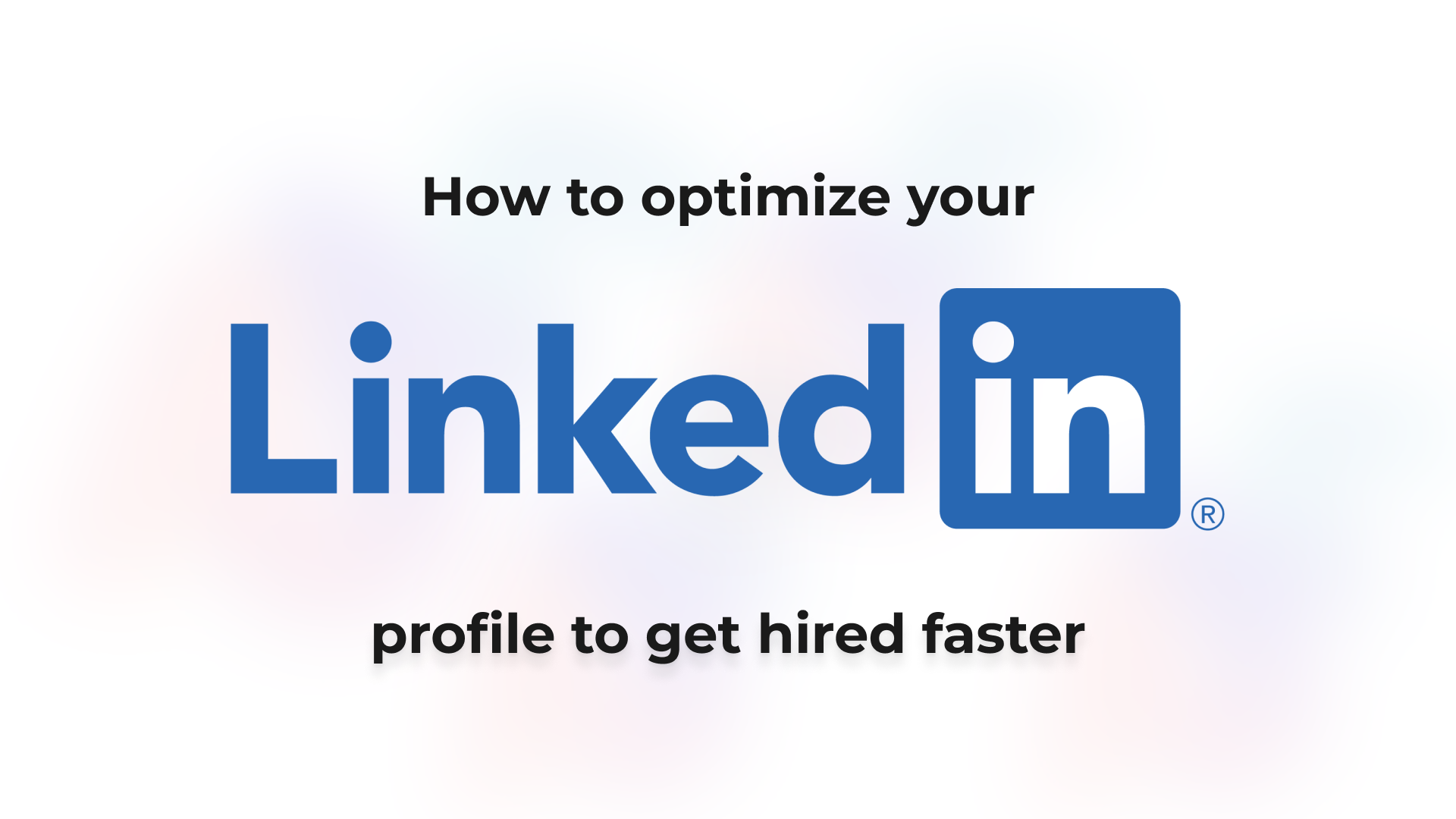
How to optimize your LinkedIn profile in 2025 and find a job faster

How to list Education and Certifications on your resume (with examples)
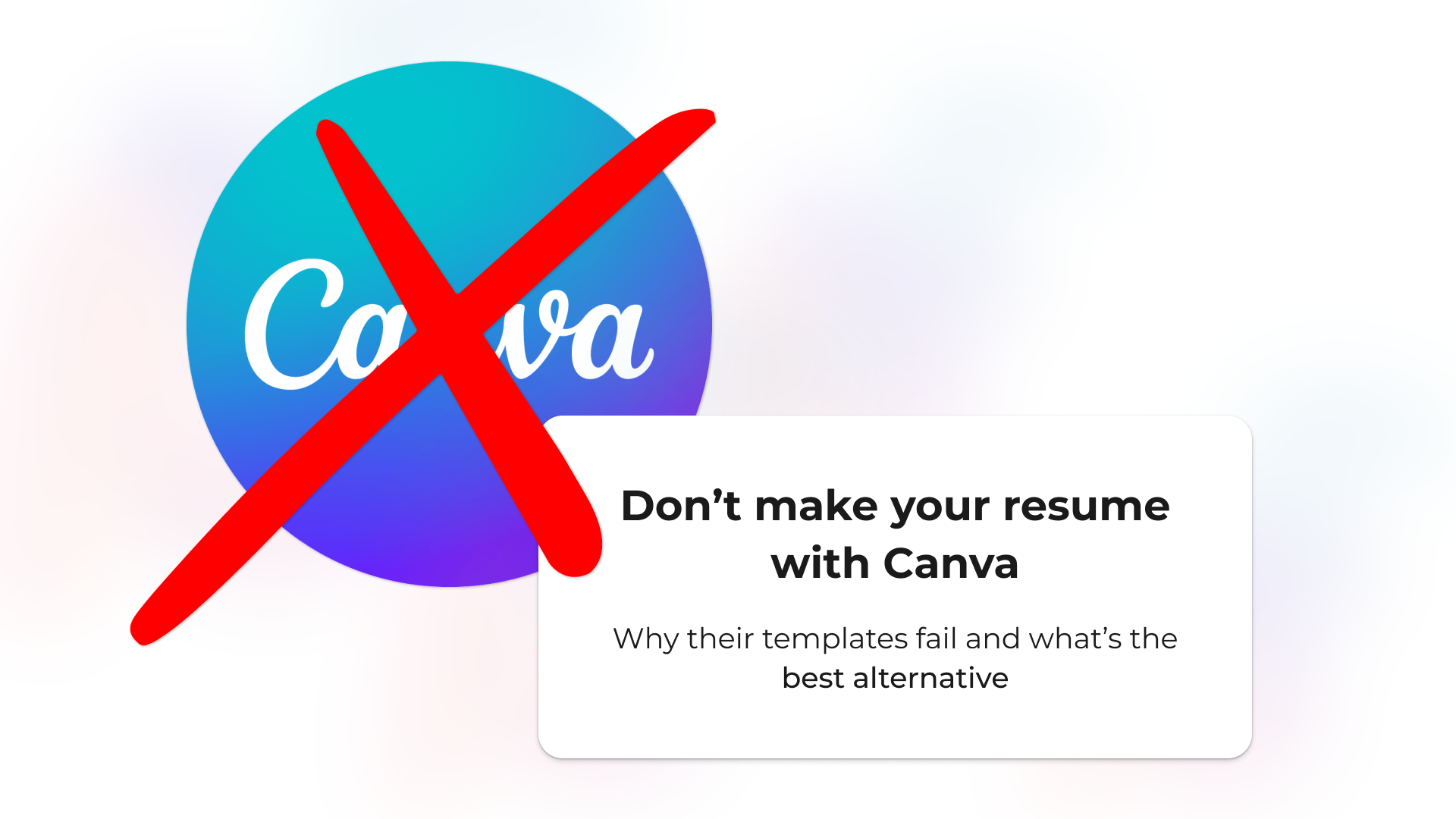
Don’t make your resume with Canva: why its templates fail and what to use instead
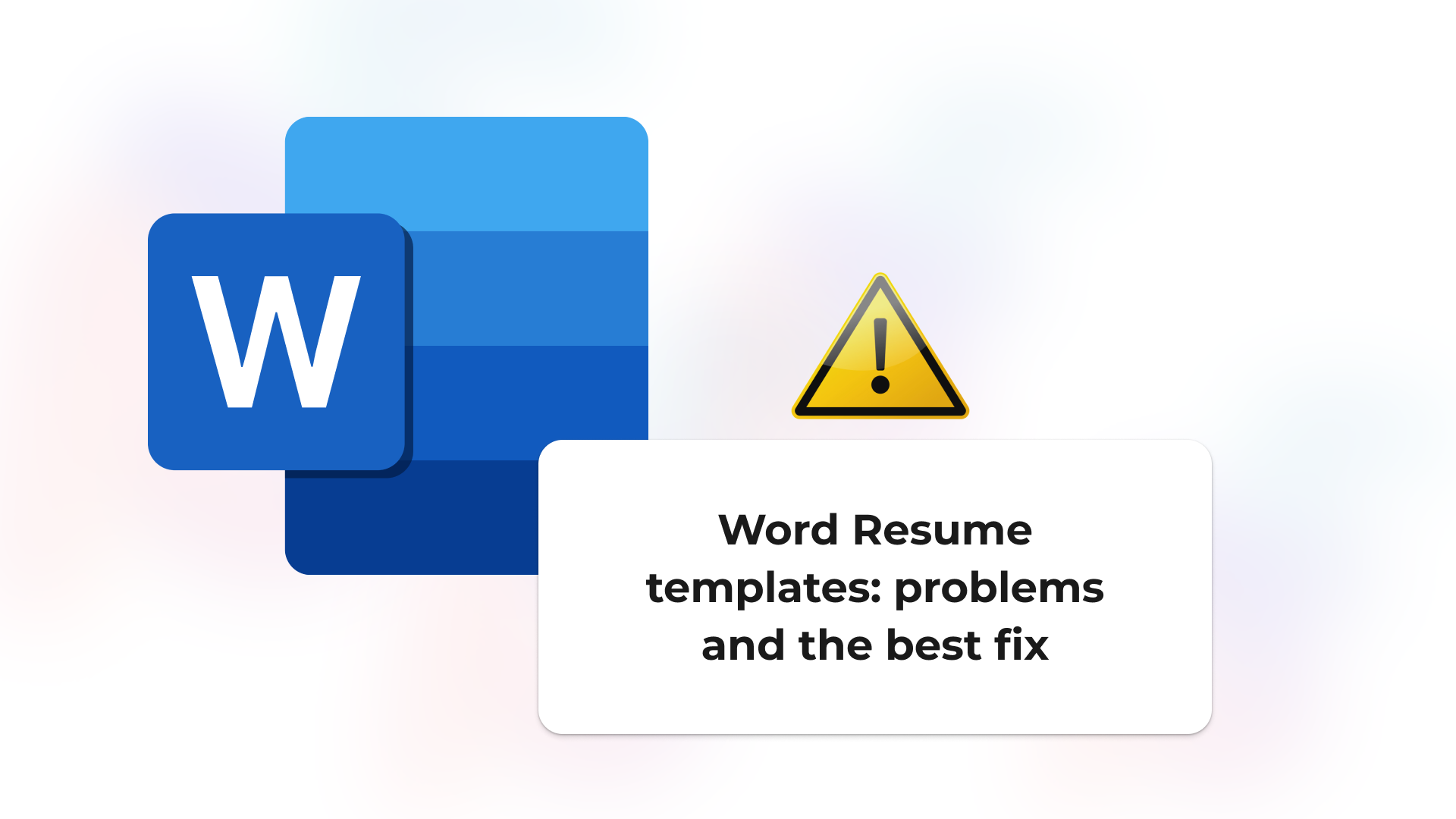
Free Word resume templates: why you shouldn't use them (and the best alternative)
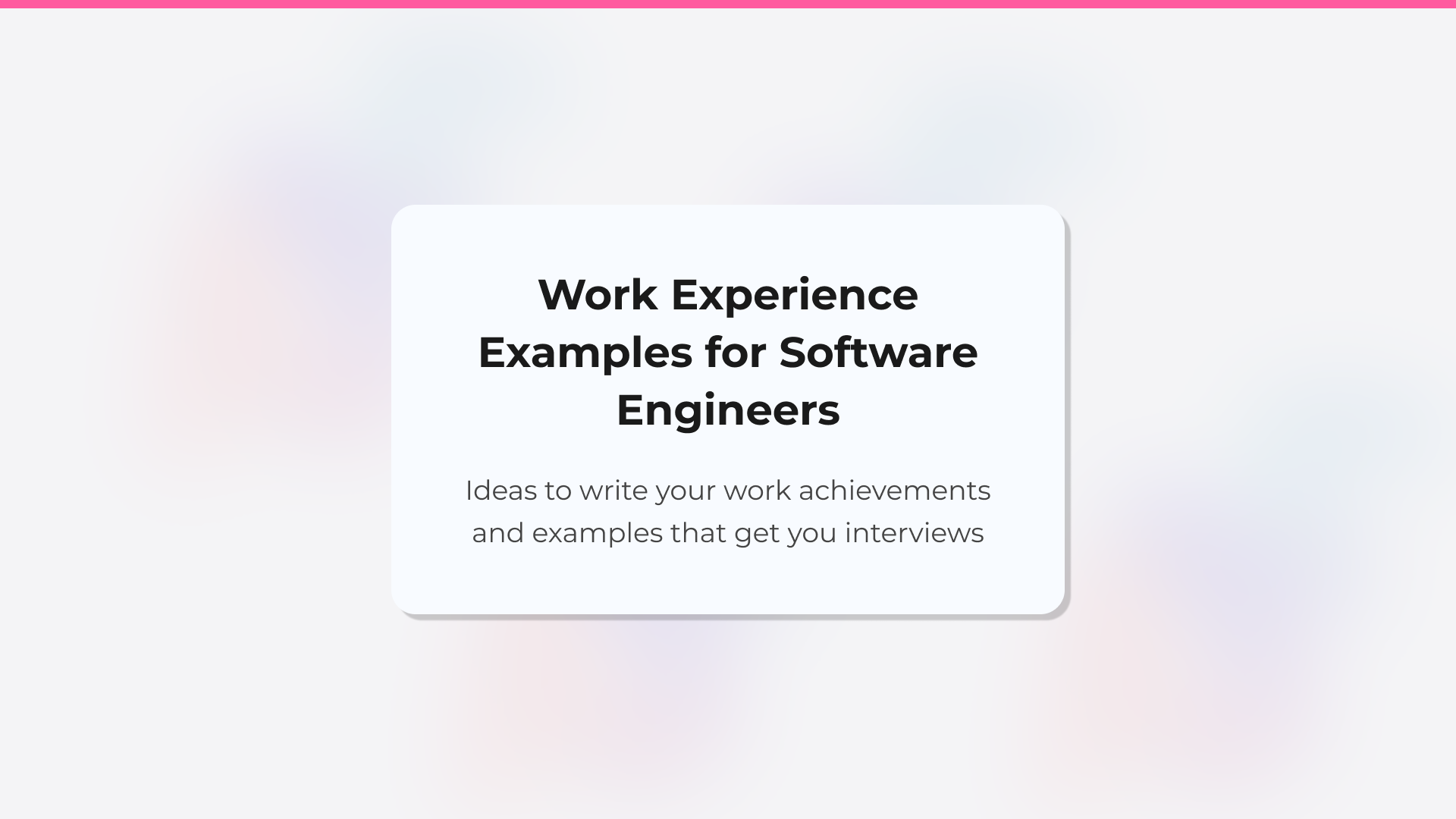
Software engineer resume: work experience and achievements examples
